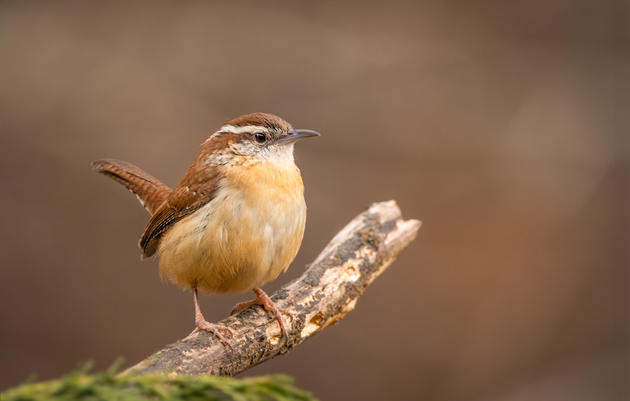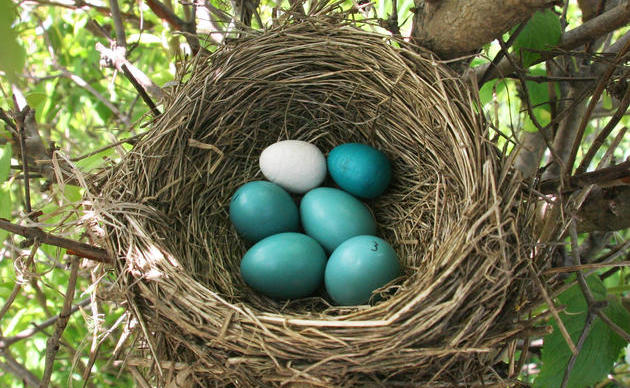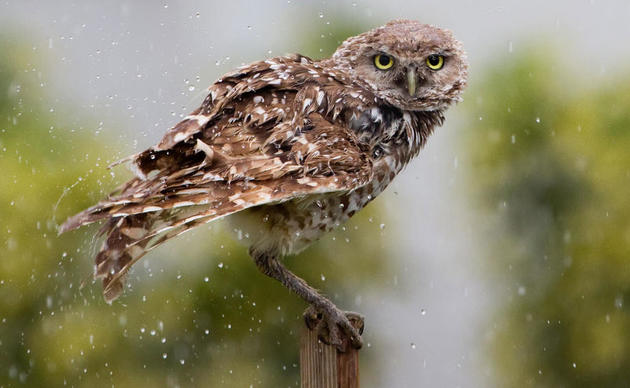Creating Bird-Friendly Buildings is one of three key elements of Audubon’s Bird-Friendly Communities program. Each year, as many as one billion birds in the U.S. collide with windows and most of these birds die from their injuries. Reflective glass and bright lights that illuminate the built environment cause these collisions. But, new innovations in materials and design are helping to steer communities, and birds, in the right direction. And in Pennsylvania, that effort is led by Audubon’s Keith Russell, Program Manager for Urban Conservation.
For nearly a decade, students and staff at the University of Pennsylvania, alongside Keith, have been working together to make their Philadelphia campus a safer, more welcoming place for birds. In a remarkably forward-thinking approach to conservation, the University’s department of Facilities and Real Estate Services has undertaken multiple projects intended to modify various collision prone campus buildings in an effort to significantly reduce bird-window collisions on campus.
The University’s latest project involves a campus dormitory, a group of student representatives, and the largest bird-friendly retrofit project on campus to date.
At Lauder College House, students were alarmed by the high mortality rate of birds due to collisions with windows surrounding a large courtyard at the seven-story dormitory. The students connected with the Faculty Director who was instrumental in elevating the concerns to the Facilities and Real Estate Services department. Together, the students and staff aimed to turn their concerns into action. They advocated for meaningful change that ultimately resulted in a bird-friendly film retrofit to the entire ground floor of the courtyard area this May, funded by Residential and Hospitality Services, part of Penn's Business Services Division, with technical expertise for the project provided by Audubon. By adding a pattern of unobtrusive white dots to the windows, they made a critical change to the way birds see and interact with the building, potentially resulting in a drastic reduction in bird deaths on campus. And, this is just phase one!
Over the next several months, as fall migration gets underway, students and several members of university’s staff will collaborate to monitor how the mitigation efforts affect birds. They will be documenting collision statistics including the number of strikes, types of species, location, time of day, and lighting conditions that were in effect at the time of each collision. In partnership with Audubon Pennsylvania, the University will use this data to inform decisions made with regard to future phases of the project. Learning more about the specifics of each collision will help staff to prioritize efforts and resources toward the most substantive and impactful changes for each phase of the project.
With assistance from Audubon, the University of Pennsylvania’s work on bird-friendly buildings began in 2015 with the application of film with a collision-preventing pattern over collision-prone windows on two buildings - one at the University’s medical school and another at the veterinary school. Since this work was completed, only one bird collision has been recorded on these windows.
Projects like the one at Lauder College House are invaluable and help to set the stage for the next generation of bird-friendly design, but the benefits are much broader. This project is helping the University of Pennsylvania to meet its Climate and Sustainability Action Plan goals. Students are enacting meaningful change through collaboration and innovation. And, models are being shared through documentation including new bird-friendly guidelines developed by the University’s department of Facilities and Real Estate Services and a report on bird strike awareness on campus developed by Penn Sustainability's student Eco-Reps.
For more information about Audubon Pennsylvania’s Bird-Friendly Buildings program, contact Keith.Russell@audubon.org.
For more information on the University of Pennsylvania’s bird-friendly initiatives, contact Chloe Cerwinka, Landscape Planner for Facilities and Real Estate Services, at chloec@upenn.edu.







